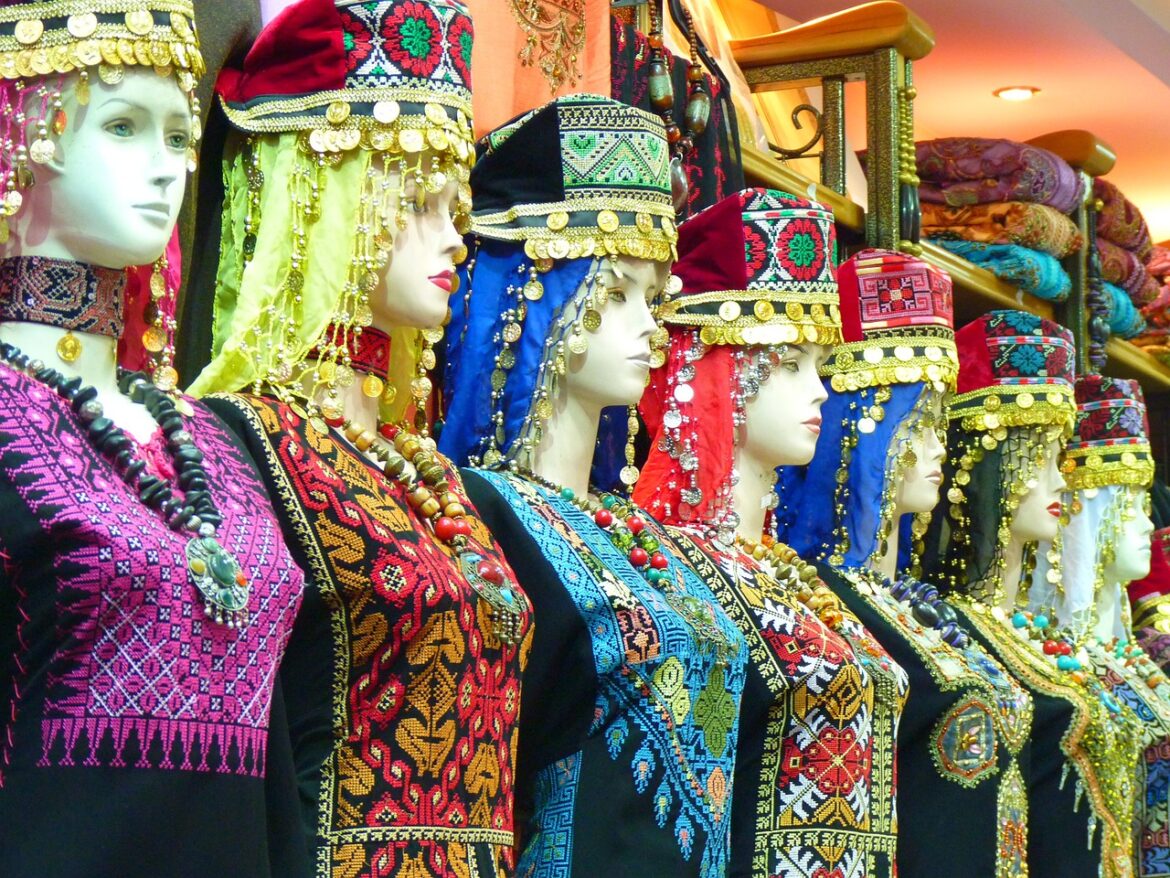Mental Framing:
In examining the reality of women within the CCIs outside major cities, it is essential to consider their access to resources, opportunities for skill development, and support systems that can empower them to participate and thrive in these industries. The following points are contributing factors to support women’s effective engagement within the Creative and Cultural Industries (CCI):
- Perception and Mindset: It is important to recognize that any contribution, no matter how small, within the CCIs is valuable to society. Ideas can start small but have the potential to grow into thriving industries.
- Defining an Industry: An industry is not solely determined by its profitability, any field that makes a meaningful contribution can be considered as an industry, as it generates benefits and addresses societal needs. Industry requires certain elements, including skills and the ability to create innovative products that solve problems and/or covers a need.
- Understanding the Value Chain: To fully understand the CCIs, particularly within the context of tourism, it is necessary to recognize and distinguish the various elements of the value chain. This will enable better mapping and understanding of how localization plays a vital role in the CCI.
- Utilizing Technology and Trendy Approaches: Recent events, such as Petra Light Festival, highlight the importance of leveraging technology and trendy approaches to promote and share the national heritage and culture with the rest of the world. Such initiatives help bridge the gap between traditional practices and modern methods of outreach, allowing for wider recognition and appreciation.
- Innovative approaches: The creative industry goes beyond the traditional functions of producing and providing products and services. It involves exploring new possibilities and adding a twist to existing concepts. Simply introducing a new product or service is not sufficient to classify it as an industry. It is crucial to transform and derive outcomes from what we have.
An example from Karak illustrates this point, such as using Jameed (a local dairy product) in the creation of chocolate. This innovative approach showcases the ability to think creatively and discover unconventional uses for existing resources. Innovation plays a significant role in CCI however, it is important to understand that innovation and creative thinking are not necessarily synonymous. While innovation often involves thinking outside the box, it can also manifest as innovative approaches within existing frameworks. Throughout the meetups, it is a recurring theme of addressing needs and providing solutions. Innovation is not limited to completely novel ideas but also involves being innovative with what already exists to fulfill those needs and provide effective solutions.
Karak’s Creative and Cultural Potential: Heritage, Talent, and Tourism
The preservation and intangible heritage of Karak hold great significance, emphasizing the importance of this aspect for the region. It is essential to recognize and invest in existing talent, enabling it to contribute productively to the industry. Talent and passion play a crucial role in this regard. The growth of tourism in Karak is highly valued. Ensuring quality in the tourism products and experiences is important. Petra, as a popular tourist attraction, presents an opportunity for leveraging its potential. Tourism is a recognized industry, and it is necessary to understand and map the value chain associated with it. Additionally, tourism serves as a platform to showcase Jordan’s rich cultural heritage. For instance, Masarat, as a cultural and touristic project, faces a limited variety of souvenirs. Introducing innovative packaging options can add variety and uniqueness to the available choices. There is a need to prioritize teaching and educating individuals about design thinking and social entrepreneurship. This knowledge is crucial for actors to transform and develop their existing resources. The challenge lies in institutionalizing and integrating the creative and cultural industries in a manner that engages local actors beyond the conventional participants.
Unveiling the Women’s Perspective: Insights into CCI in Rural and Marginalized Areas
In the realm of CCI and local engagement, it becomes evident that women residing in rural and marginalized areas emerge as the key actors. Their significance is not determined by age, occupation, or educational background. Rather, it stems from their inherent role as active participants, driven by the prevailing socio-economic needs in these specific regions, including the villages of Jordan. Within this context, we are confronted with a distinct situation and reality. It necessitates the development of personas and profiles that accurately capture the essence of these women, recognizing their innate talent and dexterity in manual craftsmanship. It is important to acknowledge that despite their lack of literacy and limited exposure to digital technologies, these women exhibit remarkable skills and expertise in their hands-on pursuits.
Empowering Women in CCI: Targeted Outreach Solutions for Rural and Marginalized Areas
To address the unique challenges faced by women in rural, marginalized areas, and villages, there is a pressing need for a dedicated MeetUp focused on finding effective outreach solutions. Specifically targeting local actors within the CCI in these rural regions, especially outside major cities, is crucial. Successful targeted outreach requires careful consideration of various dimensions. Firstly, it is essential to understand the specific needs and characteristics of the geographical area in question. This knowledge serves as a foundation for developing a focused approach. Establishing a central focal point for outreach and coordination can enhance the effectiveness of efforts. Furthermore, gaining an informed understanding of the local reality is vital. This involves identifying whether women are actively participating in the CCI and uncovering the barriers that hinder their engagement. Barriers can manifest in various forms, ranging from a lack of transportation to a lack of support and approval from husbands or male figures/guardians. Additionally, social norms and cultural influences play a significant role, acting as reference points that shape attitudes and opportunities. Effective profiling and targeting of specific groups within the CCI are crucial for tailored outreach strategies. Instead of employing broad age ranges such as 18 to 30, it is important to delve deeper into factors such as age, gender, education level, literacy, and digital competencies. This nuanced approach ensures that outreach efforts align with the unique needs and circumstances of individuals in rural and marginalized areas, maximizing their engagement and impact within the CCI.
Facilitating Outreach in Rural and Marginalized Areas: Key Venues and Entities
To effectively enable outreach efforts in rural areas, marginalized communities, and villages, it is crucial to leverage specific locations and entities. These entities serve as vital facilitators, creating opportunities for engagement and empowerment within the creative and cultural industries (CCI) sector. The following “spaces” were mentioned during the Meet Up as a reliable hubs for enabling learning, exchanging, networking and meeting:
- Youth Centers: Youth centers play a pivotal role in providing spaces for skill-building, training, and fostering creative expression. They serve as vibrant hubs that can be utilized for targeted outreach initiatives, especially among young individuals within the CCI.
- Local Community-Based Organizations (CBOs) and Informal NGOs: These organizations, although not necessarily registered, hold significant potential for driving grassroots initiatives. They have deep connections within rural communities and villages, allowing for effective outreach and engagement. Collaborating with such entities can unlock opportunities for capacity building, networking, and policy discussions.
- Ministry of Culture: As a government entity, the Ministry of Culture plays a central role in supporting and promoting the creative and cultural sectors. Leveraging their resources, expertise, and networks can enhance outreach efforts, leading to increased visibility and support for local actors in rural areas.
- Relevant Organizations with Official Mandates: In some cases, there may exist officially recognized organizations with mandates related to the CCI and tourism. These organizations can serve as important intermediaries, facilitating networking opportunities, capacity building sessions, and policy-making discussions.
Need for Mapping Local Actors in Rural and Marginalized Areas
One significant aspect that needs attention is the lack of comprehensive mapping for local actors in creative and cultural industries (CCI) outside the capital city and larger cities like Amman. It is crucial to address this gap and develop mapping initiatives that specifically focus on identifying and showcasing the talents, resources, and contributions of individuals and organizations in these regions. To emphasize the importance of mapping, several key factors come into play:
- Knowledge and Outreach: Mapping provides a systematic approach to understand and reach out to local actors in rural and marginalized areas. By documenting their presence, skills, and contributions, it becomes easier to connect with them, involve them in relevant initiatives, and create opportunities for collaboration and growth.
- Recognition and Visibility: Mapping serves as a catalyst for recognition. It highlights the valuable work and cultural contributions of local actors, shedding light on their talents, traditions, and creativity. Through mapping, their efforts gain visibility and appreciation within their communities and beyond.
- Networking and Collaboration: Mapping facilitates networking among local actors. It enables them to discover and connect with peers, organizations, and resources in their regions. This networking aspect opens doors for collaborations, knowledge sharing, and collective efforts, fostering a sense of community and supporting mutual growth.
- Community Building: Mapping contributes to community building by bringing local actors together and fostering a shared sense of identity and purpose. It helps create a supportive ecosystem where individuals and organizations can collaborate, exchange ideas, and collectively work towards the development and promotion of the local creative and cultural scene.
Opportunities and Challenges in CCI for Women in Rural and Marginalized Areas
Opportunities:
- There is a growing trend of support and funding opportunities in the creative and cultural industries (CCI).
- Basic knowledge and resources are available at the household level and Karak governorate level to help individuals start businesses from scratch.
- It is crucial for actors to be in proximity to existing opportunities and creative spaces.
- Networking opportunities should be provided for women and women’s communities.
Challenges:
- Women face barriers in accessing and obtaining existing opportunities in the CCI.
- Pricing considerations, feasibility studies, and marketing pose challenges to starting a business.
- Advanced capacity-building resources and centers are lacking.
- Lack of moral support, particularly from male figures/guardians within the local communities.
- Rare traditional crafts, such as woolwork, need to be recognized and supported in rural areas.
- Social criticism negatively impacts working women.
- Pre-graduation awareness and networking with academic institutions are needed for educational recognition.
Solutions:
- Develop mapping initiatives and establish communities in each area to facilitate communication, networking, and outreach.
- Create a database that provides access to information about CCI’s actors and their work. The responsibility for maintaining this database can be assumed by the government.
- Ensure the availability of the database through both user-friendly and professional platforms.
- Encourage local initiatives and groups for local women in Karak, focusing on handcrafts.
- The Irada Center in Karak can offer free feasibility studies, yet it is not known by many.
- Disseminate information about existing resources and services through offline outreach methods and raise awareness among talents and potential users.
- Foster collaboration to introduce innovation, including digital solutions, into products.
- Provide self-development and capacity-building programs specifically targeted at women to empower them and amplify their impact.
- Encourage actors to be proactive in seeking opportunities and taking the initiative.
- Organize dialogues and meetings to gather support from the community and family, benefiting women in their pursuits of CCI.
Enhancing Artisan Product Quality and Verification through Improved Database Management
To guarantee the quality, design, and demand of artisan’s/CCI actors’ products, particularly within a database (both basic and complex), the following considerations were discussed:
- Hierarchy and Curation: Implement a hierarchical approach when organizing the lists/database. This allows for proper categorization and showcases the diverse range of artisan products, ensuring their visibility and recognition.
- Ministry-Approved Barcode: Adopt a barcode system approved by the Ministry of Culture. Each product can be assigned a unique barcode that directs users to a designated platform to verify the authenticity and details of the ideas, products, actors, and artists’ work.
- Social Media Presence: Encourage artisans to create dedicated social media pages to showcase their work. These platforms serve as valuable resources for promoting and verifying artisan products, allowing potential customers to engage with artists, explore their creations, and gain insights into their artistic processes.
- Establishing an Artisan Association: Consider the creation of an artisan association, specifically in Karak or similar regions. Such an association would regulate and organize artisan crafts, ensuring quality standards, fostering collaboration, and providing guidance. This collective effort contributes to building a reliable database.
- Online Platforms and Offline Evaluation: Develop an official website or platform to serve as a centralized database. The database should be regularly evaluated offline by responsible individuals within the group and the official platform. This evaluation process ensures the inclusion of high-quality artisan products based on predetermined criteria.
Addressing Knowledge Gaps and Overcoming Barriers in Artisan Product Management
In order to ensure effective management of artisan products and overcome knowledge gaps, as well as barriers such as life-work balance and cultural taboos, the following strategies were suggested:
- E-commerce and Marketing: Provide training and resources to artisans on e-commerce platforms, online marketing techniques, and strategies for reaching a broader customer base. This empowers artisans to showcase their products globally and expand their market reach.
- Export Opportunities: Support artisans in exploring export opportunities by connecting them with relevant agencies, trade fairs, and international marketplaces. This opens doors for their products to reach customers outside of Jordan, increasing demand and revenue potential.
- Design Thinking and Social Entrepreneurship: Foster a culture of design thinking and social entrepreneurship among artisans. Encourage them to think creatively, identify market gaps, and develop innovative solutions that address social challenges while meeting customer needs.
- Providers for Database Management: Identify and establish providers who specialize in official database management and creation. These experts can ensure the accuracy, integrity, and security of the artisan product database, relieving artisans from the technical aspects and allowing them to focus on their craft.
- Evaluation and Quality Control: Implement a robust evaluation process to set minimum quality standards and guard against subpar products. This evaluation should consider market demand, both domestically and internationally, to ensure that artisans produce items that are needed and valued.
- Technical Support: Provide technical support tailored to the specific needs of the CCI-Tourism sector. This support can include assistance with website development, online sales platforms, digital marketing, and other technical aspects relevant to promoting artisan products.
- Accessible Knowledge: Develop inclusive educational programs that cater to individuals with varying literacy levels. Utilize visual aids, interactive workshops, and localized training materials to ensure that knowledge is accessible to all artisans, regardless of their literacy levels.
Addressing Challenges and Clarifying the Role of the Ministry of Culture in Artisan Product Management
To overcome challenges and clarify the role of the Ministry of Culture (MoC) in managing creative and cultural products, through the following points/actions:
- International Exhibition Participation: Facilitate the participation of local talents and actors in international exhibitions through the support and coordination of the Ministry of Culture. This enables Jordan to showcase its cultural heritage and artisan products on a global stage, fostering international recognition and market opportunities.
- CCI and Intangible Heritage: Recognize the importance of Creative and Cultural Industries (CCI) and intangible heritage as valuable streams within the artisan sector. Create strategies that specifically address the unique challenges and opportunities associated with preserving and promoting intangible cultural heritage, while nurturing the growth of CCI.
- Overpricing as a Barrier: Address the issue of overpricing by providing guidance and support to artisans in setting fair and competitive prices for their products. Educate artisans on market trends, production costs, and pricing strategies to ensure that their products remain accessible to potential buyers.
- Reaching Women in CCI and Intangible Heritage: Implement targeted initiatives to reach and support women who are active participants in the CCI and intangible heritage sectors. This can include mentorship programs, training opportunities, networking events, and tailored resources to empower women artists and entrepreneurs.
- Official Platform and Mapping: Utilize the official platform provided by the Ministry of Culture for mapping and registering all actors in the artisan sector. This centralized database eliminates the need for intermediaries, promotes transparency, and enables artists to directly showcase their work, facilitating connections with potential buyers and supporters.
- Empowerment and Support: Clarify the role of the Ministry of Culture as an empowering, enabling, and supportive entity. Highlight the financial support and resources available to artisans through the MoC, emphasizing that the ministry’s goal is to foster growth, sustainability, and recognition of the artisan community.
- Self-Management and Leadership: Encourage artists to take an active role in managing and leading their own businesses. Provide capacity-building programs and resources that enhance their entrepreneurial skills, enabling them to effectively navigate the challenges of the market and drive their own success.
- Role of Men: Recognize the crucial role of men in supporting and advocating for women in the CCI and the intangible heritage sectors. Encourage men allies to champion gender equality, inclusivity, and the advancement of women’s empowerment in the artisan industry.
Suha Ayyash



